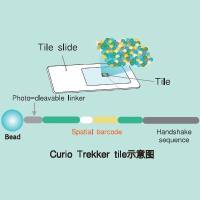The number of various cargo delivered into cells by CPPs demonstrates the effective transport abilities of these short-peptidic sequences. Over the years of research, the translocation process of CPP–cargo complexes has been mapped to being of mostly endocytic nature, however, there is still no consensus on which of the endocytic routes is prevalent and to which extent the interplay between different modes of endocytosis is taking place. The intracellular trafficking of CPPs attached to a cargo molecule is even less understood. Therefore, the internalization and the subsequent intracellular targeting of complexes need clarification in order to define cellular destinations and improve the targeting of the cargo molecule to specific cellular compartments depending on the cargo attached to the transporting vector. This chapter focuses on describing the methods for visualizing the CPP–protein complexes in relation to different endocytic markers, for example transferrin (marker for clathrin-mediated endocytosis) and cholera toxin (ambiguous marker for clathrin-, caveolin-, and flotillin-mediated, but also clathrin- and caveolin-independent endocytosis) to determine the role of the respective pathways during entry to cells, and to different intracellular targets, for instance the lysosomal organelles or the Golgi apparatus. Additionally, antibody staining of respective endocytic vesicles following the internalization of CPP–protein complexes will be discussed.






